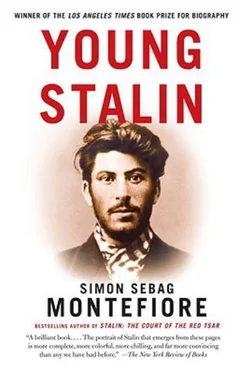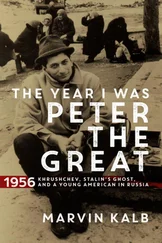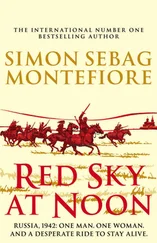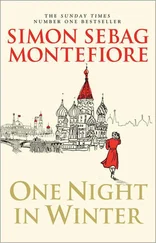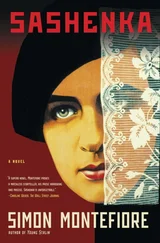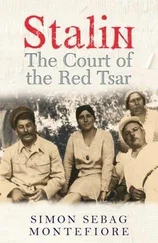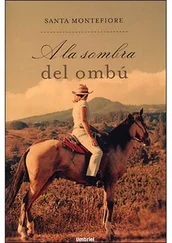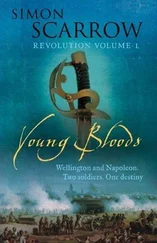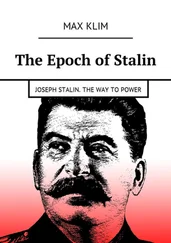Marxism and the National Question was Stalin’s most famous work: he himself never stopped editing it during his long life. It was an answer to the Austrian socialists who proposed what Lenin called “an Austrian federation within the Party.” As ever, Lenin was being practical and farsighted, as well as ideological. He feared that the Jewish Bundists or Georgian Mensheviks, who advocated variations on cultural autonomy or even national separatism, would make the Party and ultimately the Russian Empire ungovernable under Bolshevism. He needed a theory that offered the ideal of autonomy and the right of secession without necessarily having to grant either. Lenin and Stalin agreed that nothing should stand in the way of a centralized state. Stalin defined the nation as a “historically formed, stable community of people, united by community of language, territory, economic life and psychological make-up.” On the Jews, Stalin asked: “What sort of nation is a Jewish nation which consists of Georgian, Dagestani, Russian and American Jews who don’t understand each other, inhabit different parts of the globe… and never act together in peace or war? They’re being assimilated” for they have “no stable and large stratum associated with the land…” He attacked “Austro-Marxism” and national autonomy, but in the Caucasus accepted “regional autonomy.” The right of secession was offered (in theory) but should not be taken. This paper was not beautifully written, but it had a sort of subtlety that turned into a reality when Stalin created the web of republics that became the USSR. It remains relevant because the breakup of the Soviet Union in 1991 allowed the full republics such as Ukraine, Estonia and Georgia to become independent but not the autonomous republics such as Chechnya.
“Solin” and “Safin,” the earlier versions of his new name, may have been typos because sol means “salt” in Russian: “Man of Salt” does not quite have the metallic sheen of the final version. When they were typesetting Zvezda in April 1912, says Vera Shveitzer, “The editorial board once changed the signature arbitrarily. The next day when J. V. Stalin opened Zvezda and saw the signature ‘Solin,’ he smiled: ‘I don’t like meaningless borrowed bylines.’” He returned to “K.St.” until January 1913. Stalin was not the only “industrial name”: Rosenfeld became “Kamenev”—Man of Stone (though he remained much too fluffy for the moniker); and Scriabin became “Molotov”—Hammer Man. There was also a fashion for taking aliases from jailers: Bronstein borrowed the name “Trotsky” from one of his prison warders. Contrary to many claims in Western biographies, “Stalin” is not a Russianization of Djugashvili: Djuga does not mean “iron” or “steel” in either Georgian or Ossetian.
This trading centre boasted a large missionary monastery, which had baptized the local tribesmen and which was led by a Mikhail Suslov, the great-grandfather and namesake of the Soviet grandee who was favoured by Stalin after the Second World War and who became the éminence grise of the Brezhnev era.
Sverdlov was wrong: there were two Kureikas. But their destination was just south of the Arctic Circle.
In 1942, the First Secretary of Krasnoyarsk, Constantin Chernenko, who had risen in the Terror by denunciation and even participation in executions, commissioned the well-known historian M. A. Moskalev to interview Stalin’s Turukhansk acquaintances for a sycophantic book, Stalin in Siberian Exile . Chernenko printed the book and sent it to Moscow for approval. After all, Politburo member and secret-police chief Beria had built his career on overseeing a preposterously inflated history of Stalin’s Caucasian career. But this time it did not work. Stalin was incensed by Chernenko’s inquiries, though they are a blessing for us historians. The dictator was working long hours to win the war; he knew there was nothing glorious to reveal in Kureika, quite the contrary; he both craved his idolatrous cult and disdained it; and Moskalev was a Jew, a race Stalin increasingly distrusted. He phoned Chernenko and shouted at him. The book was withdrawn. Moskalev was arrested in the anti-Semitic, postwar Terror but survived as a top Soviet historian into the 1960s. Chernenko’s career was frozen. However, his sycophancy found him another patron: he became Leonid Brezhnev’s long-serving chef de cabinet , Politburo member and penultimate successor as Soviet leader in 1984: the short reign of this senile mediocrity symbolized the geriatic obsolescence of the Soviet Union. Chernenko died in 1985. His successor was the vigorous reformer Mikhail Gorbachev.
“Individualist” was a Marxist insult because Bolsheviks were meant to submit the individual to the collective.
Like the Azef case, the revelations about Malinovsky, aired in the Duma, shook the political establishment and helped to undermine the credibility and competence not just of the Okhrana but also of the Duma, the Emperor and the state itself. One of Malinovsky’s first accusers was Elena (Rozmirovich) Troyanovskaya, Stalin’s hostess in Vienna, who had become Secretary to the Bolshevik Duma deputies. Yet the traitor dismissed this as the sour grapes of his ex-mistress. When Malinovsky was captured by the Germans during the war, Lenin sent him clothes, but after the Revolution, faced with the evidence, he changed his view: “What a swine: shooting’s too good for him.” Malinovsky was tried in November 1918, prosecuted, ironically, by Elena Rozmirovich’s husband, Nikolai Krylenko, at a tribunal chaired by Elena herself. Malinovsky was shot.
For decades there were rumours of Stalin’s rape or seduction of a girl in Turukhansk and his fathering a child. This first appeared in Essad Bey’s biography of 1931. Svetlana Alliluyeva says her aunts told her Stalin had a son in exile. The stories were repeated in biographies and sensational newspaper articles but seemed outlandish, presumably just anti-Stalin myths. But it is confirmed by the KGB in General Serov’s 18 July 1956 memorandum to First Secretary Khrushchev and the Politburo. Serov, a brutal Stalinist secret policeman, had the sense to separate himself from Beria and attach himself to Khrushchev. After Stalin’s death, he assisted Khrushchev in the arrest and execution of Beria, becoming the first Chairman of the KGB, the new version of the secret police. His memo was read in secrecy at a Politburo meeting and signed by all Stalin’s old henchmen before being consigned to the top secret “Special File.”
Fourteen was technically the age of consent in the Russian and European regions of the Tsarist Empire, but this was Siberia. Besides, there was no precise legal concept of statutory rape in Tsarist law: for the police, it was as much a crime “against female honour” as a violation of her father’s chattels. The seducer’s agreement to marry and then the exchange of marriage vows were seen as rectifying an untoward situation.
The payments have attracted suspicion, but they are much too meagre for the wages of an Okhrana agent. They included some of his CC salary; and, as we have seen, Sverdlov received far more. Yet during the Great Terror in 1938 Stalin’s secret police chief, “poison dwarf” Nikolai Yezhov, who had become his closest henchman and was presiding over the slaughter of over a million innocent people, began to realize that he was dispensable. Yezhov, sinking into alcoholism and sexual debauchery under the terrible strain of killing and torturing, gathered materials to use as security or blackmail against his master and the rival magnates Beria, Georgi Malenkov and Khrushchev. He procured Stalin’s ten money orders and kept them in his personal safe, but there is no smoking gun here. Three of them were money from Gori, probably from his mother or Egnatashvili. The other seven, from Moscow and Petersburg, adding up to 100 roubles, delivered 10 roubles here, 10 roubles there, though two were a more considerable 25 roubles each. They did not save Yezhov, who was dismissed in late 1938 and shot in 1940. Interestingly Stalin did not deign to destroy the money orders, just filing them in Yezhov’s papers where they were found by Professor Arch Getty, who has generously shared them with me. For the full story of the rise and fall of Yezhov, see Stalin: The Court of the Red Tsar .
Читать дальше
